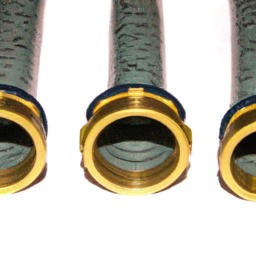Garden Hose Fitting What Size
Table of Contents []
- What Size Is A Garden Hose Fitting
- Features of Garden Hose Fittings
- Benefits of Garden Hose Fittings
- Pros and Cons of Garden Hose Fittings
- Case Studies: Garden Hose Fittings
- Frequently Asked Questions About Garden Hose Fittings
- Mistakes People Make with Garden Hose Fittings
- Best Practices for Garden Hose Fittings
- Summary:
What Size Is A Garden Hose Fitting
An Overview of Garden Hose Fittings
Garden hoses are a basic necessity for gardening, landscaping, and other outdoor projects. The size of a garden hose fitting is important to consider when shopping for a new garden hose, and there are a few different standard sizes. In this article, we will explore garden hose fitting sizes and the different features, benefits, pros and cons, case studies, mistakes, best practices, and FAQs associated with garden hoses.
Features of Garden Hose Fittings
Garden hose fittings are the connecting pieces at the end of hoses that allow it to be attached to a spigot, nozzle, or other piece of equipment. Common fittings attached to the end of garden hoses include threads that fit standard American pipe fittings, fire hydrants, and quick couplers. Hose ends might also have extensions, shut-offs, and water stoppers. Garden hose fittings are most commonly made of either plastic or metal, depending on the needs of the user.
Benefits of Garden Hose Fittings
The most obvious benefit of garden hose fittings is the ability to attach a garden hose to other hoses, nozzles, spigots, or other pieces of equipment. This functionality makes garden hoses much more versatile, allowing gardeners to do all kinds of jobs quickly and efficiently. In addition, choosing the right hose fitting size is important in order for the connections to work effectively and without leaks.
Pros and Cons of Garden Hose Fittings
Like all products, garden hose fittings have both advantages and disadvantages. On the plus side, they are typically relatively inexpensive, so they won't break the budget. Moreover, they are lightweight enough to be carried around the garden or in a toolbox. On the other hand, plastic fittings are less durable than metal ones and may be prone to breakage.
Case Studies: Garden Hose Fittings
One of the best ways to understand the real-world application of garden hose fittings is through case studies of their use.
Case Study 1: Jane is a gardener who needs a garden hose that is long enough to reach all of the areas where she is working. She can purchase an extra-long hose, but she will also need a few additional fittings to connect the extra length to her spigot and the other end into her nozzle.
Case Study 2: Andrew owns a landscaping business and he needs equipment that can stand up to tough working conditions. He purchases metal fittings to connect his garden hoses to his spigots, as they tend to be stronger and more durable than plastic fittings.
Case Study 3: Maria is looking for an easy way to store her garden hoses since she has multiple spigots in her garden. She purchases a quick coupler set that will allow her to easily attach and disconnect the hoses from each other, as well as her spigots.
Frequently Asked Questions About Garden Hose Fittings
Q: What size is a garden hose fitting?
A: Garden hoses come in several different common sizes, including 3/8 inch, 1/2 inch, 5/8 inch, and 3/4 inch.
Q: What is the difference between a male and a female garden hose fitting?
A: Male garden hose fittings have threads on the outside, while female garden hose fittings have threads on the inside.
Q: Are there any tips for attaching and using garden hose fittings?
A: Yes, always check for compatibility before attaching fittings, make sure the fittings are securely tightened, and be sure to disconnect the fittings properly before storing the hoses.
Mistakes People Make with Garden Hose Fittings
One common mistake people make with garden hose fittings is failing to check for compatibility. It is important to ensure that the connections will fit and work properly. Additionally, people may not pay attention to the size of the fitting, which can lead to a poor connection or potential leaks. Finally, improper tightening of the fittings can also result in leaky connections.
Best Practices for Garden Hose Fittings
The best practice for garden hose fittings is to ensure that the fittings are compatible before attaching them. Additionally, make sure to use the right size of fitting for the hose you are using. When attaching or disconnecting, be sure to properly tighten or loosen the fittings. Finally, always disconnect your fittings before storing your hoses.
Summary:
Garden hoses are essential for many outdoor projects. The size of the fittings at the end of the hose is important to consider, and many commonly used sizes are available. Garden hose fittings are relatively inexpensive and they enable gardeners to make various connections for their projects. It is important to check for compatibility when attaching fittings, and use the right size fitting for the hose. Additionally, always be sure to properly tighten and loosen the fittings before and after use.
In conclusion, garden hose fittings provide gardeners with the ability to make connections to the hoses they are using and enable them to do all sorts of jobs quickly and efficiently. Be sure to follow the best practices for using garden hose fittings in order to get the most out of your hose and connections.

Previous Page
Next Page
